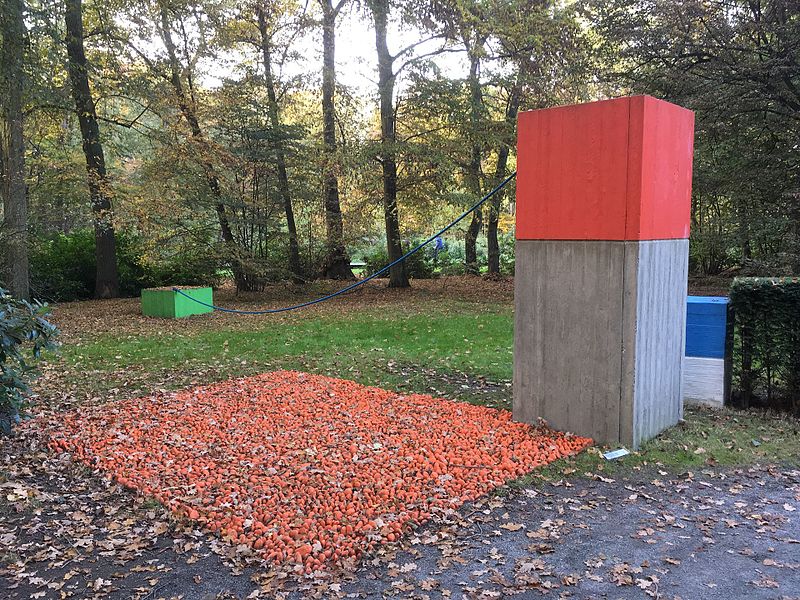Rachel Whiteread (CBE) is an English artist that primarily produces sculptures, typically in the form of casts. She was born in 1963 in Ilford, a town in East London, but raised until age 7 in the Essex countryside. Her mother was also an artist, while her father was a teacher. She studied painting at Brighton Polytechnic and sculpture at the Slade School of Fine Art and became interested in casting objects after taking a workshop on casting with sculptor Richard Wilson. Her works often use industrial materials such as rubber, concrete and plaster. Some of her more popular works include House (1993), which is a large concrete cast of the inside of an entire Victorian house and the Judenplatz Holocaust Memorial (2000) in Vienna which resembles the shelves of a library with the pages turned outwards. Whiteread represented the United Kingdom at the 1997 Venice Biennale and created Monument for the empty plinth in Trafalgar Square in 2001. She was the first woman to win the Turner Prize in 1993 (the year she made House).

Embankment by Rachel Whiteread. Turbine Hall, The Tate Modern, Bankside, London. 12 November 2005. Photographer: Fin Fahey. CC BY-SA 2.5, https://commons.wikimedia.org/w/index.php?curid=422277


